Why I like Fenix Resources (my reason might surprise you)
I just returned, with my business partner, from an excellent time spent at the biannual Noosa Mining Conference, held at Peppers in Noosa Heads. This was my first time there, which may strike some readers as odd. On the emerging miners' circuit, this is come once, come again, calendar entry. It is a great way to escape the tyranny of institutionalized funds management since you don't really meet any fund managers there. It is just miners and investors.
I mean the real investors. The people whose money is actually being put to work.
This can turn up some interesting opportunities.
Here, I am going to explain why we are buying Fenix Resources (ASX: FEX)
The value of logistics
In the grand scheme of things, iron ore is a pretty cheap product. Let's call the price $100 USD a tonne, which is 1,000 kg, in sensible nation units. That is $0.10 USD per kilogram. That is just about the cheapest bulk product around. For instance, wholesale Australian wheat flour trades around $0.70 to $2.80 USD per kilogram. When you consider how far it can be from an iron ore production centre to a port, that is really a bargain compared to Australia Post!
With this factor in mind, the cost of transport is critical for bulk commodities.
Out of interest, I looked up the history of the Australian Road Train, as a solution to the tyranny of distance, which hauled Australian commodities from our vast interior lands to strategic ports.
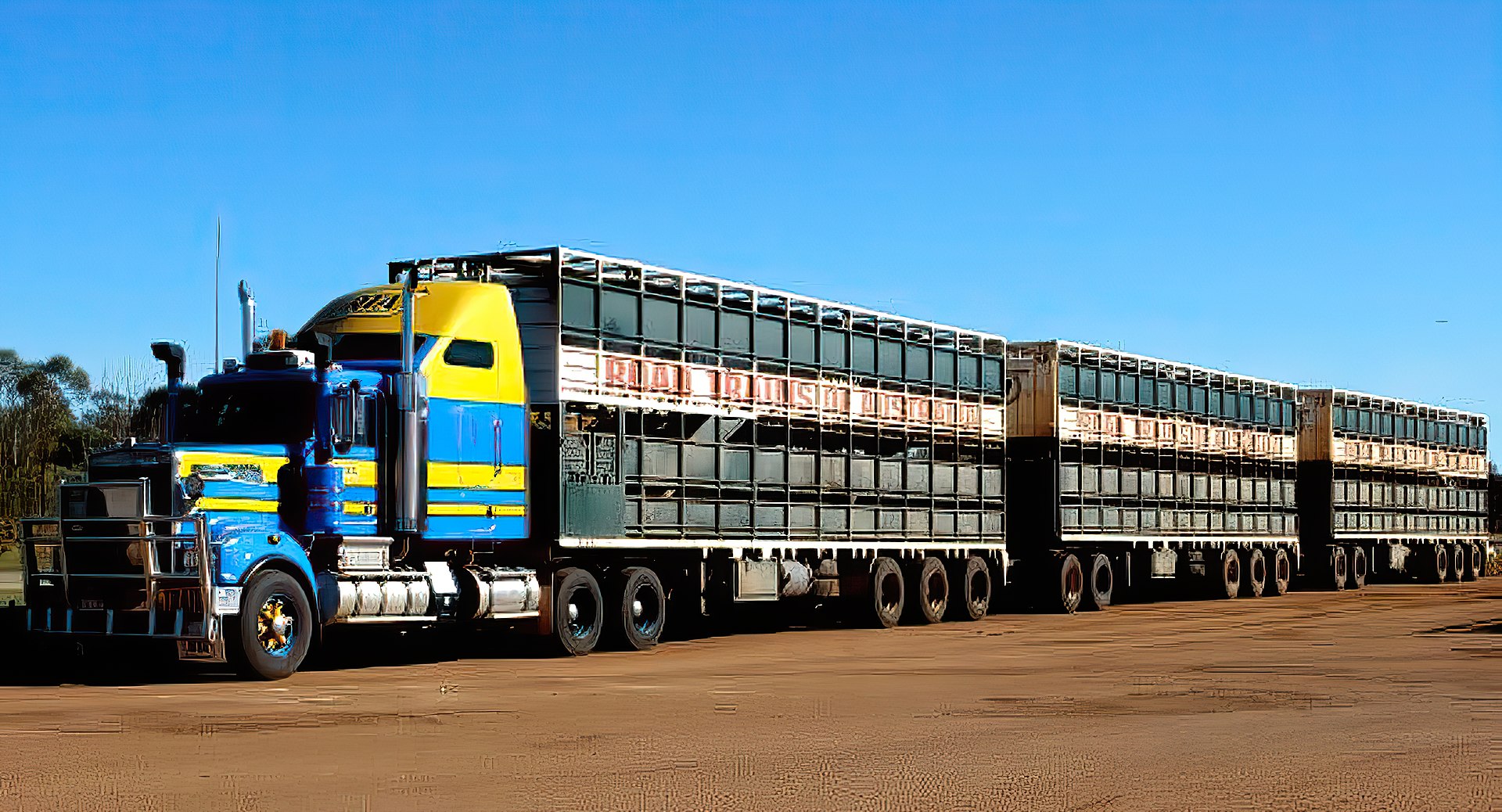.jpg)
I was thinking this might be a late 1960s innovation, but no, it was a mid-19th century thing.
Early road trains consisted of traction engines pulling multiple wagons. The first identified road trains operated into South Australia's Flinders Ranges from the Port Augusta area in the mid-19th century. They displaced bullock teams for the carriage of minerals to port and were, in turn, superseded by railways.
Unsurprisingly, wherever railways were economic, they ruled the roost, but in faraway locations, the steam-wheeled road train was the only viable way to cart goods.
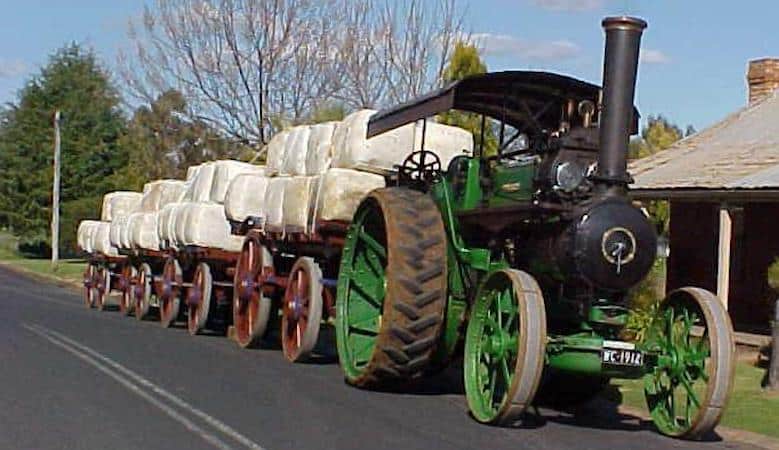
I should have known better. Years ago, when my partner and I lived in an ancient little Queenslander at Highgate Hill, in Brisbane, our elderly neighbour told us that the house was originally built in the late 1800s as the station masters abode at the Roma Street railhead. This was a couple of kilometres away, across the Brisbane River. It was moved in the 1920s, by a bullock-powered road train. Our neighbour was a young boy then. He watched it come up the hill pulled by a team of sweating, heaving animals, that stretched halfway up the hill.
I could not find our actual former house, but I did find a near-carbon copy of it.
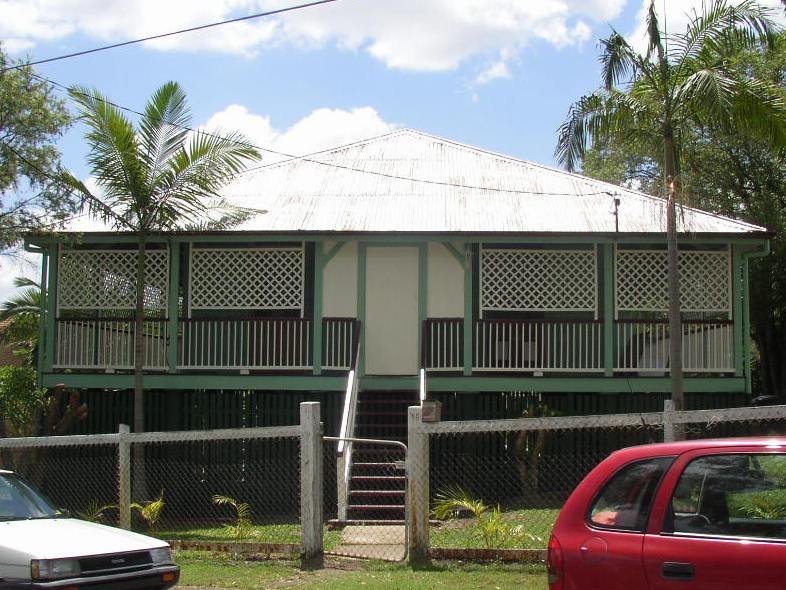
Road trains are versatile, and the 18-wheeled off-road house is a thing, in Queensland.
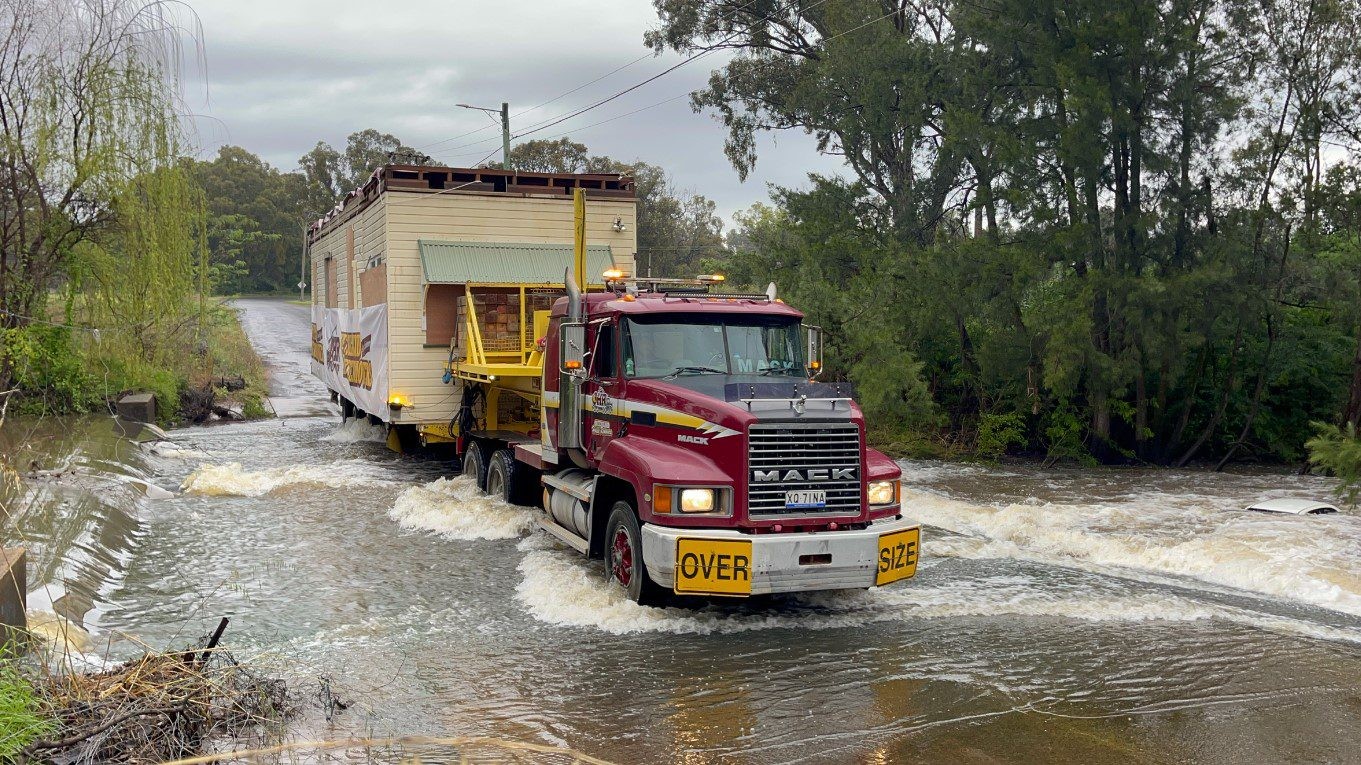
In a previous series of articles on the iron ore market, Where's iron ore headed from here?, and the follow-up article, Is iron ore done and dusted? I outlined my view that the practical floor on iron ore prices is not the $60 USD a tonne put out by the ever-low-balling budget surplus guarding government forecasters, but around $100 USD a tonne, due to the market structure in China.
I have not changed that original guess, except to point out that the stress lows since those articles have been around $80-90 USD a tonne, and not for very long. This is contrary to the conventional wisdom that prices should settle around the marginal cost of production, which most analysts put around $30-40 USD a tonne for the Australian iron ore majors.
The difference is that the marginal cost of the marginal tonne relates to one of two sources, the large low-grade iron ore in China, or the high-grade small-scale operations elsewhere.
Mining as a dig, shift, blend, and ship logistics business
The company I will write about, Fenix Resources, is in the latter camp. It produces high-grade iron ore products from Iron Ridge in WA, a direct shipping ore, at around $85 USD a tonne cost. Given what I said previously, about the marginal economics of iron ore pricing, you may think it very strange to consider a name like Fenix, especially now, when prices are low around $100.
Indeed, this is the highest risk point in the cycle for such companies.
This is why two factors matter.
- Grade matters through the impact on realized pricing (higher for a higher grade)
- Scale matters through the impact on cost through capital employed (lower for smaller scale).
If you own your own railway, and a massive mine, then curtailments of production in low-price environments can be very costly. The opposite is true of smaller-scale operations.
The nature and quantum of capital employed are key to through-cycle economics. The key area of interest for us is the logistics element of cost for the many small-scale deposits, which have high-grade potential, but remain undeveloped because of logistical constraints.
Fenix Resources has innovated in their use of low tare weight, high gross haulage side-tipping road trains to run the 500km distance to port. Superficially, this looks like a great way to lose money, whenever iron ore prices are low. However, the region in which they operate is littered with many small-scale high-grade stranded iron ore assets.
There is a different skill set needed to mine these, than that favoured by the majors. It is all about fast time to market in low-strip-ratio, surface mining, to feed a different kind of iron ore business. This is one that can readily scale into production at good prices, and readily scale back during tougher times. The key is the reusability of capital stock and capital employed.
Road trains, demountable mine camps, dozers, loaders and port facilities, represent the total package needed to dig, shift, blend and ship iron ore. There is no way the business will ever achieve the scale of a BHP Group (ASX: BHP), Rio Ltd (ASX: RIO), or Fortescue (ASX: FMG). However, that is not the point.
Investors make money on the return to capital employed.
The only way that I know to achieve higher return on capital employed, within a smaller-scale business, is to have some business insight into the advantages of smaller scale. You have to take a different approach to leverage what is good about being a smaller-scale operator.
In the iron ore market, this is tough to see, but there are some advantages:
- It is easier to find many small high-grade deposits than one large one.
- Smaller-scale deposits are more likely to present low-strip-ratio mining opportunities.
- In ex-growth bulk commodities, shorter mine life projects are less likely to be stranded.
Of course, this tips conventional wisdom on its head, but only because iron ore growth rates have tailed off. The iron ore majors are in a mine reserve replacement phase. This means that the businesses, while extremely profitable, have become high-margin, high-payout dividend plays.
Investors need to look for new business models in ex-growth markets like iron ore, or new bulk commodities in the growth phase, like lithium, phosphate, rare earths, or industrial minerals.
Wherever the bulk selling price is much above the iron ore benchmark, good profit margins can follow long-distance road train haulage. This is certainly true of spodumene concentrates at prices ranging from $1,000 USD a tonne to $3,000 USD a tonne. It will be true of others.
Logistical solutions that have been refined for lower-value iron ore ought to be feasible for the much higher-value products now entering the Direct Shipping Ore (DSO) market. Just like the great opening up of inland Australia for shipping cattle and grains, we think that appropriate business models, with haulage as one component, can open up Australian critical minerals.
The Iron Ridge Direct-Shipping Ore project
The origin of Fenix Resources' focus on logistics, port facilities and direct shipped ore was their Iron Ridge mine project in the Murchison region of Western Australia. This is a long way inland from the port of Geraldton, about 490km by road. The project has been mining since December 2020, with about 3 Mt of ore shipped so far, at a rate of 1.3Mtpa.
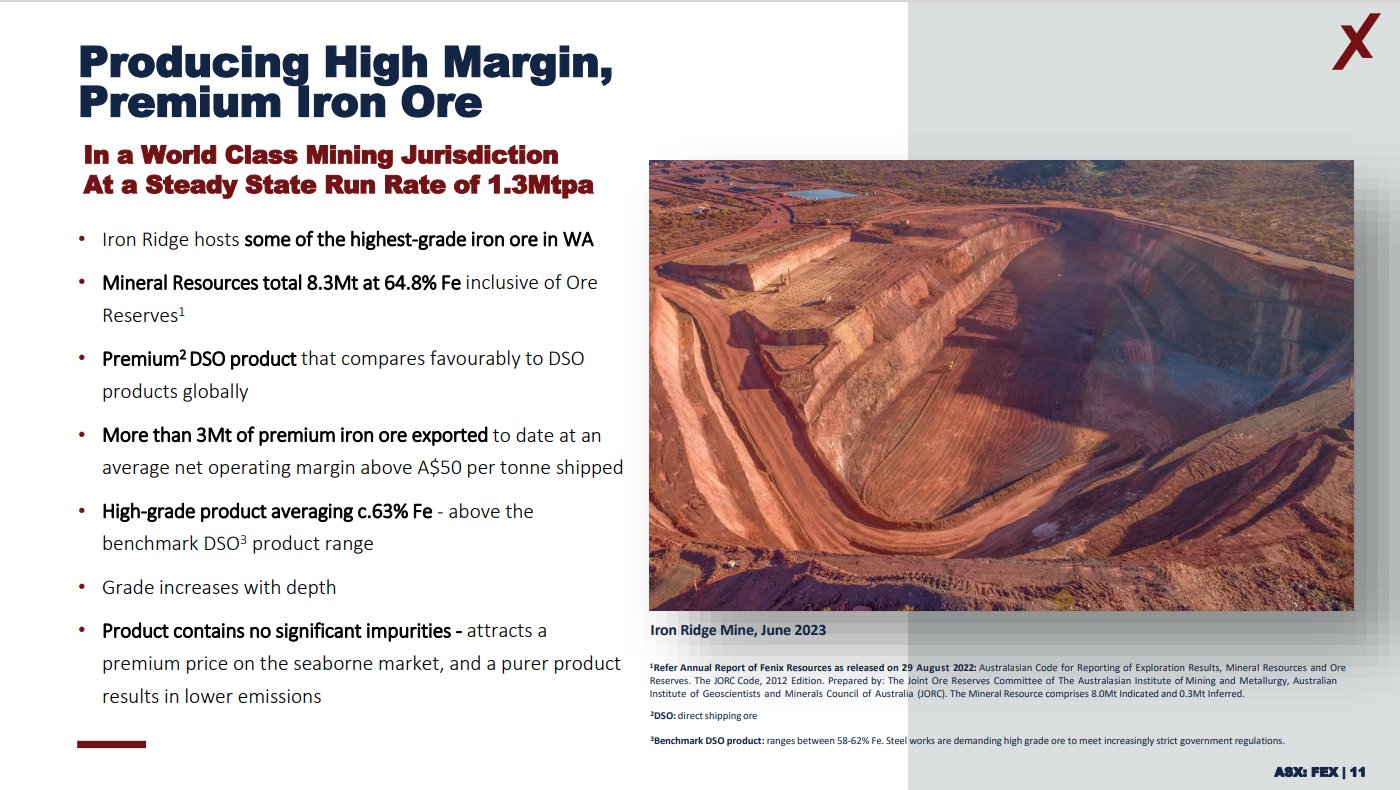
While the ore is of high value in situ, at 64.8% Fe, the Mineral Resource is small at 8.3Mt. This does not support a long mine life, at production rates north of 1.3Mt per annum.
From the get-go, Fenix Resources used contract mining and trucking to reduce upfront capital cost and get the project into production, at attractive prices, with 50% of committed offtake. This is a hard way to earn a living, but the clear focus on capital cost reduction, and astute hedging at peak iron ore prices, has delivered good margin and cashflow, thus far.
The challenge is to build upon this progress to carve out a sustaining business.
Entrepreneurial thinking does not start with a known end state in mind. It is necessarily a go-forward proposition, with an opportunistic mindset. In the case of Fenix, they could have simply sat still, worked Iron Ridge for a little extra mine life, and harvested for cash flow.
Ahead of my trip to Noosa, I had the company pegged to be a one-hit wonder that came out like the proverbial frog after rain, lucked out with some good hedging, and would fade hence. Having listened to Chairman John Welborn expound on the regional opportunity in logistics, and their recent acquisition of Mount Gibson's Mid-West Iron Ore and Port Assets, I am no longer so dismissive. It is an occupational hazard of the investing game to become jaded. Those who know too much, easily learn too little, once the world has changed.
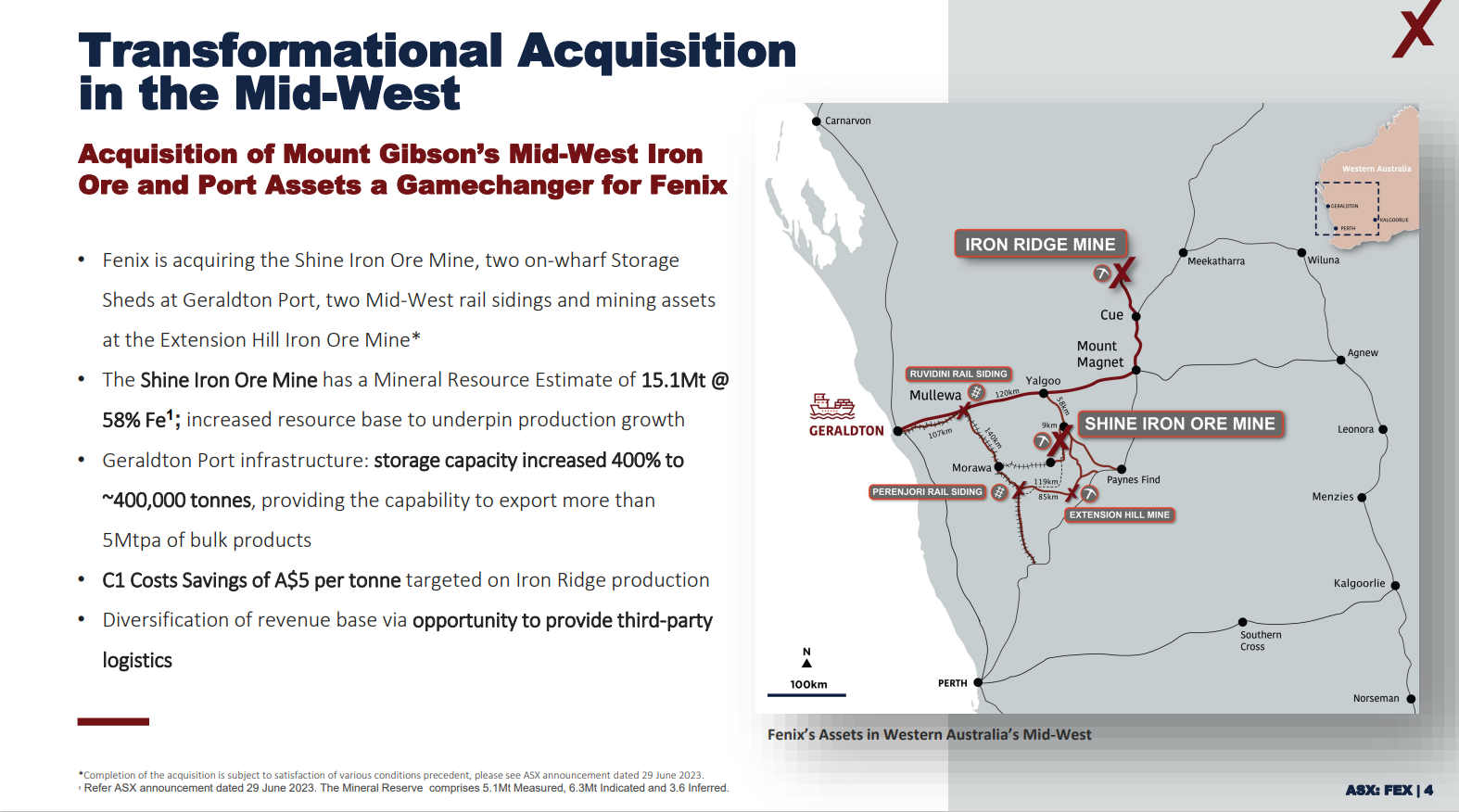
I had been an investor in Mount Gibson Iron (ASX: MGX) in the past, so I knew that the Shine Iron Ore Mine was not working very well because of logistical problems. This is all ancient history now, but I had invested in Mount Gibson because of the fantastic Koolan Island resource, which grades above 65% hematite.
One day, there was a cyclone, the pit flooded from the ocean side, and a brand-new employee, Eric the Saltwater Crocodile, turned up to cruise the flooded pit harassing insurance assessors.
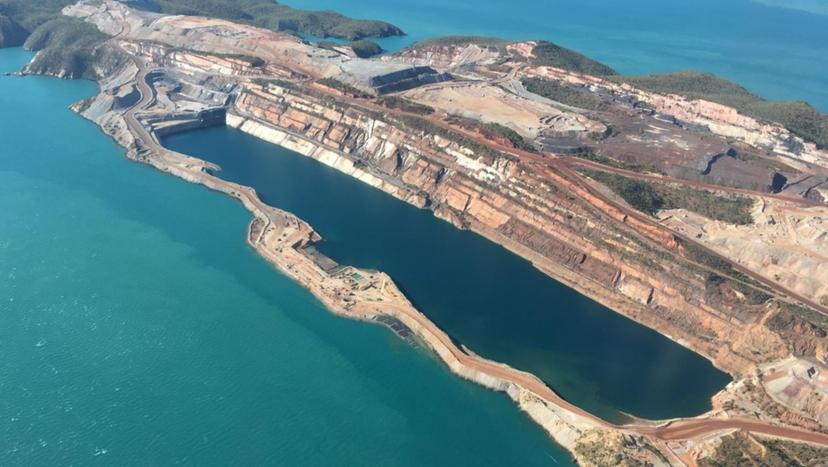
That story was one of those misery-inducing reminders of the hazards involved in doing stuff in the real world, where Mother Nature has the ultimate say-so on your right to mine.
Mt Gibson did vault that hurdle, once a favourable insurance payment came through. However, the troubled Shine Iron Project had to be suspended in late 2021, due to poor prices. This was tough for the firm due to their then surplus port storage capacity of 360,000 tonnes, down at Geraldton Port, Western Australia, adjacent to those used by Fenix Resources, for Iron Ridge.
In June 2023, Mount Gibson reached an agreement to divest its Mid-West iron ore mining and infrastructure assets, including its storage facilities at Geraldton Port, to Fenix Resources
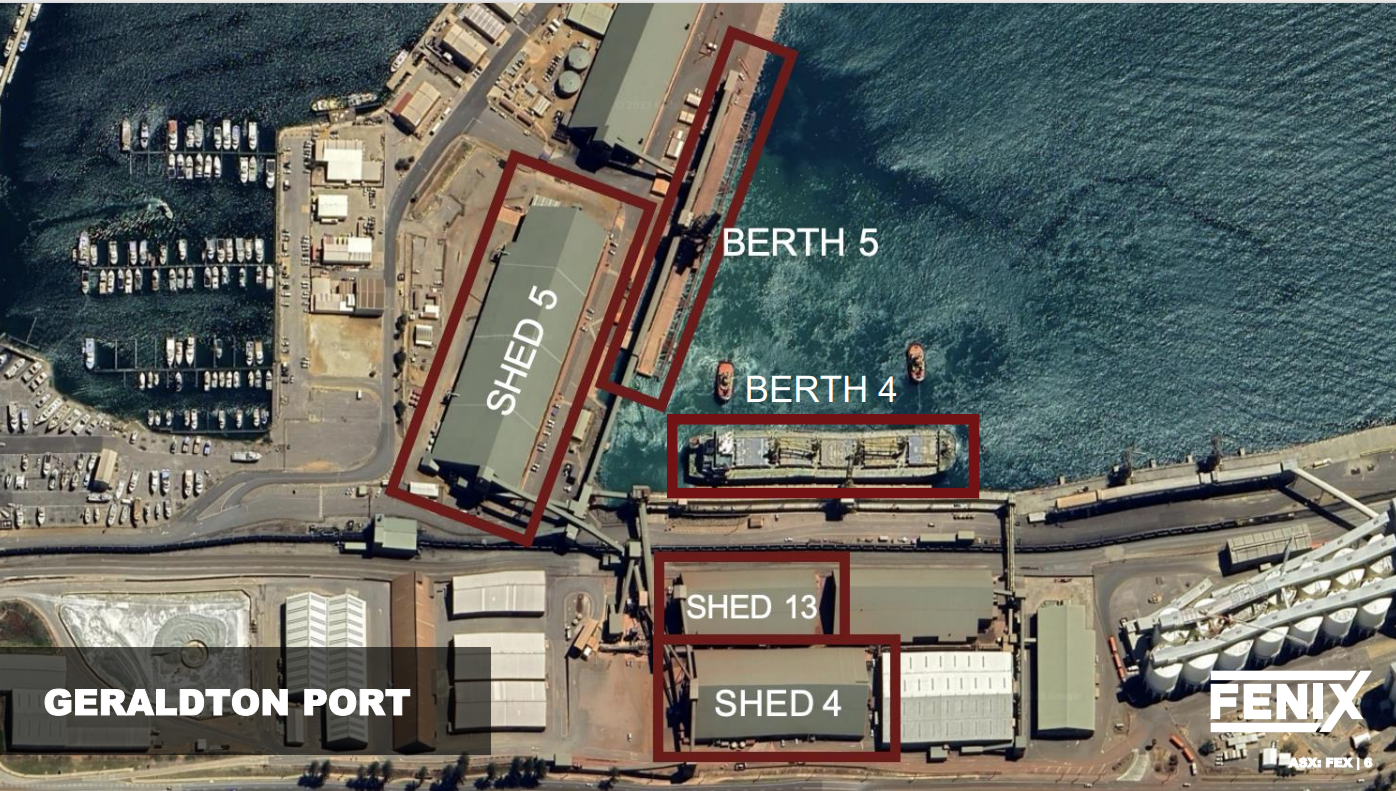
In the original ASX release, dated 29-Jun-2023, Chairman John Welborn remarked:
The substantial port and rail assets we are acquiring have an assessed replacement cost of more than $80 million. The assets provide Fenix with valuable Mid-West rail transportation and Geraldton Port unloading, storage and ship loading facilities which are required by regional bulk commodity producers and exporters, allowing Fenix to diversify our revenue base by becoming a third-party logistics provider.
This is opportunistic, to be sure, but the Mid-West map tells the story.
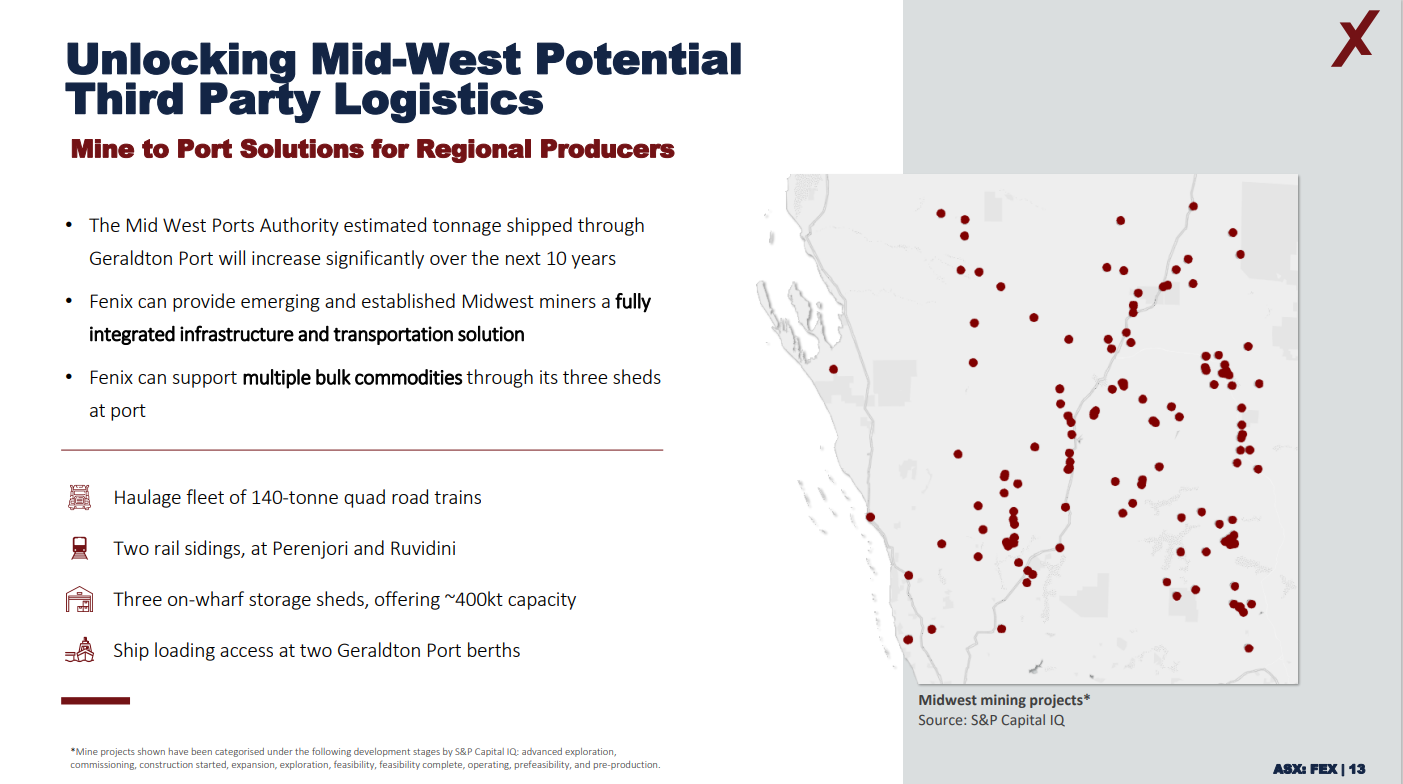
I like to invest in people and companies that have a vision of what they can do that is much larger than what they are doing but with a clearly demonstrated path for development.
There are no names associated with those dots on the map, but the key line above is:
...multiple bulk commodities...
If you do the math on profitable mining and shipping iron ore, at selling prices around $100 USD per tonne, the numerous Mid-West sourced bulk commodities with values similar to, or considerably higher than that, makes this a nascent business plan worth paying attention to.
Within the transaction rationale is this concluding line:
Combining all three sheds under the same ownership provides Fenix the additional potential to blend iron ore products at the port as well as segregate iron ore products from other products such as base metal concentrates, potash, urea, silica sands and spodumene (lithium) concentrates.
Creating value, with efficient capital allocation, is about recognizing the unrealised value in what your competitors may have before them, but which they can only fully realise with your help. Capitalism, whenever it works, is about enlightened self-interest.
Put your own capital at risk, with a well-considered plan, that aims to create value larger than the sum of the parts, by cutting the proverbial Gordian Knot, that which obstructs progress.
The cutting of the Gordian Knot is an Ancient Greek legend associated with Alexander the Great in Gordium in Phrygia, regarding a complex knot that tied an oxcart. Reputedly, whoever could untie it would be destined to rule all of Asia.
This part of Western Australia has many orphaned bulk commodities projects that just need better solutions across logistics, personnel, power, and water, on just and appropriate terms.
This is not only a financial equation, but also environmental, and social.
The tippable quad Road Train DSO haulage solution
Figuring out what may turn out to be a good opportunity is as much luck as foresight, but you have to be prepared to recognize when foresight is uppermost in the equation for success.
In the vast expanse of Western Australia, bulk haulage still runs on diesel. That may change one day, with electrification, but the key to the economics is the tare/gross weight ratio, and the maintenance downtime driven by rough road conditions.
[NB: for developments in electric road trains see this article on Vision Electric, in SA]
Once I dug a little deeper, into the story of Fenix Resources, I was reminded of the famous dictum on innovation and discovery that is attributed to Louis Pasteur:
Chance only favours the mind which is prepared.
Luck may play a part, but those that deliver often make their own luck.
On the board of the company is one Craig Mitchell, whose bio reads:
Mr Mitchell founded Mitchell Corp in 1997 which became one of Australia’s largest bulk haulage businesses before its sale to Toll Group in 2011. Craig was awarded the Ernst and Young Western Australian Entrepreneur of the Year 2006.
The plot does thicken some.
In 2019, he founded trucking and logistics company Newhaul, which formed a joint venture with Fenix Resources.
That Joint-Venture is now ancient history. It was successful, since Fenix Resources bought out the remaining 50% interest in Fenix-Newhaul Pty Ltd, back on 22 July 2022.
Craig Mitchell joined the board after this transaction closed. The Newhaul business that he set up uses lightweight, heavy-duty quad road trains to achieve the necessary cost and reliability metrics on long-distance heavy haulage. They are also working with Agrimin (ASX: AMN) for haulage of potash from Lake Mackay in central Western Australia, to the Port of Wyndham.
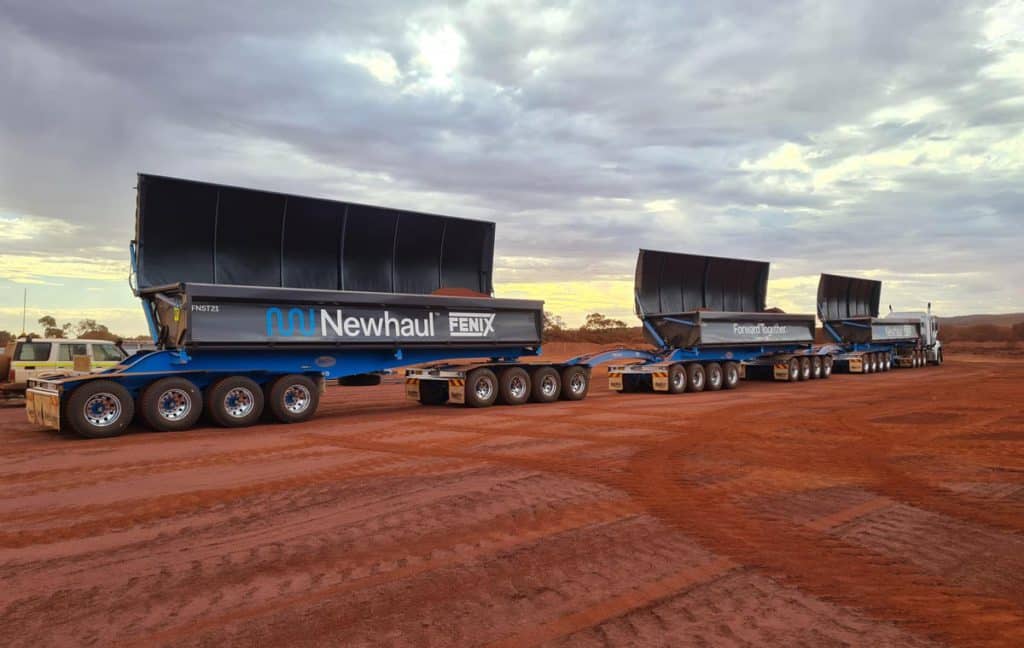
Clearly, Mr Mitchell is key to the realization of the Fenix Resources plan, but the scale-up of any logistics business depends on committed route volumes. This is a partnership of the best kind. The logistics development team must have an R&D payoff, and the customer needs to earn a return through better haulage rates.
Fenix Resources is now in control of that part of the logistics business which forms the cutting edge of monetizing stranded bulk commodity assets. Meanwhile, Newhaul retains value in the advanced trailer designs, and driver training solutions that they have developed. The design work by Bruce Rock Engineering, enabled the Fenix-Newhaul JV to hit their targets.
The trailers are engineered to keep payloads up and maintenance down, and boast quick and easy operation with simple, accessible hydraulic systems that help keep trailers on the road and down time to a minimum. With tare weights ranging from 6.5 to 8.5 tonnes, the tippers have been customised to suit what Fenix Newhaul JV was looking for.
Some governance wonks may find this weird, but I don't. There is a chicken-and-egg problem to solve in unlocking stranded bulk commodity assets, and this does it.
I like the deal and everybody who came together to make it happen.
When you do innovation this way, it unlocks some real opportunities.

I am often critical of ESG-obsessive fund managers counting imaginary Angels and Devils on the head of their lapel pins. However, that kind of forward-thinking ticks the boxes for me.
Who better to work in the vast expanse of Western Australia than the folks who call it home?
What is not to like about Fenix Resources?
If you asked a regular funds manager that question, there would be plenty.
- High-cost producer at circa $70AUD/tonne in a potentially over-supplied market
- Short mine life with the present Iron Ridge project at circa four years
- Just bulked up on port and logistics assets they now have to fill
- Took over a mine at the Shine Iron Ore project which was suspended due to market prices
The list could go on, and I am sure you will hear that from many folks in the market.
The risk of doing anything of substance in this world is that you might fail.
However, if you do nothing, then why are you even alive?
For a market capitalisation of $196.5M AUD, you are buying a company with one operating mine, approximately $80M AUD of replacement value strategic port assets, a 30 Road Train 140t per train, logistics operation, two mid-West rail sidings, $68.9M cash at bank, and a management team who know how to bring a mine in fast to production, to make it work.
There is much heavy lifting for this firm to realize the full vision of the Mid-West opportunity, but at every turn, I see the mark of innovation, from the Newhaul JV, to Bruce Rock Engineering.
This is a firm I am happy to put in my portfolio for clear upside optionality.
I cannot actually value that, which is why I like it.
There is downside risk, but it does not look that great compared to the upside.
Some investment decisions are like that.
You just don't know. Maybe a storm blows in and Eric the Crocodile shows up, or a host of eager young folks show up to your Kickstart Driver Academy, and you have more work to give them than you can shake a stick at. I incline towards the latter outcome.
There are huge development opportunities in Western Australia for commodities from lithium, through phosphate, kaolin, potash and rare earths. However, they must get to market.
Firms like Fenix Resources, and Newhaul, are out to unlock that value equation.
Whoever cuts that Gordian Knot will Rule the West, in my humble opinion.
Photo: Iron Ridge mine, Fenix Resources (2023).
Never miss an insight
Enjoy this wire? Hit the ‘like’ button to let us know. Stay up to date with my content by hitting the ‘follow’ button below and you’ll be notified every time I post a wire. Not already a Livewire member? Sign up today to get free access to investment ideas and strategies from Australia’s leading investors.
5 topics
6 stocks mentioned

